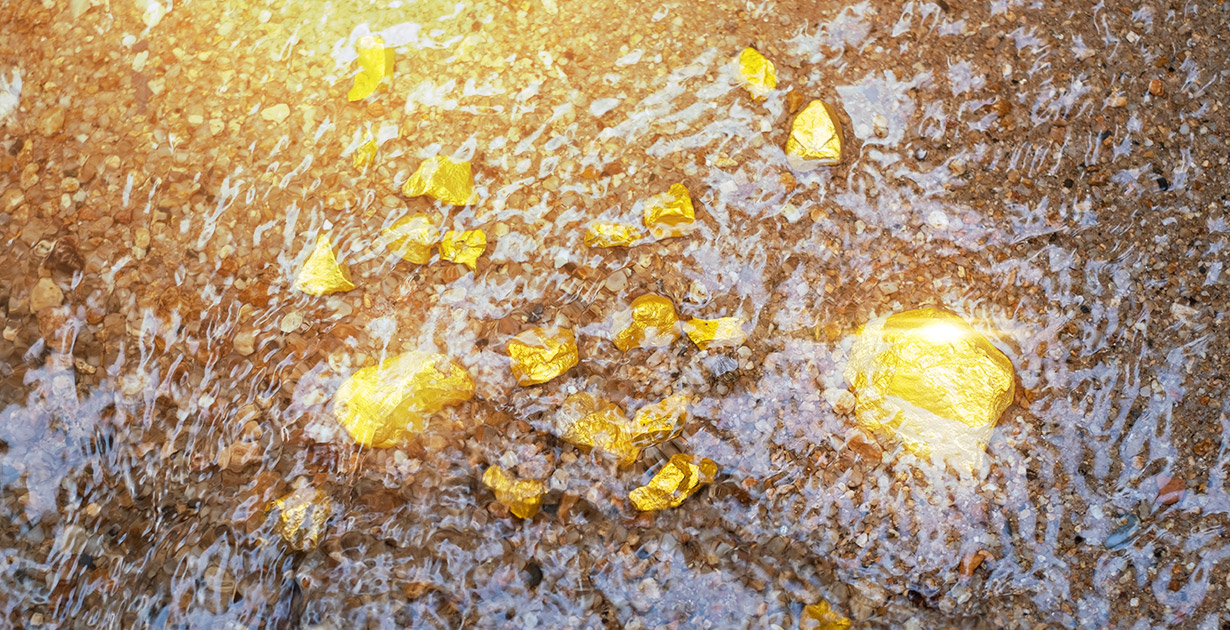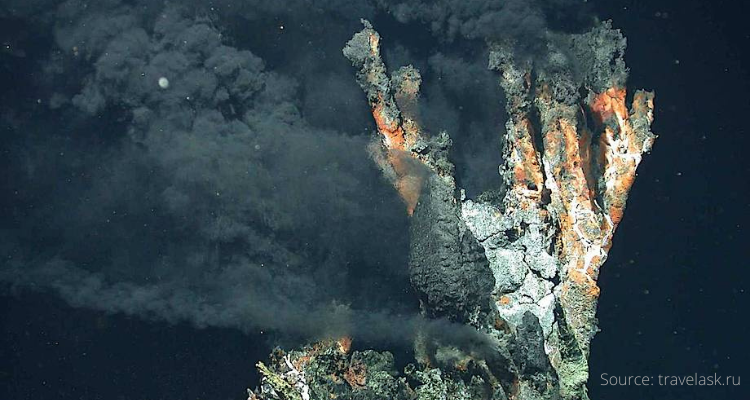
Mining gold from water: fiction or reality?
Average reading time — 4 minutes
Gold is found not only in the depths of the earth but also in the waters of the oceans. Humanity learned about this in 1872, when the chemist Edward Sonstadt established the presence of the yellow metal in sea water. The discovery immediately attracted the attention of scientists, inventors, and adventurers. However, it turned out to be very difficult to obtain the valuable resource.
Where does gold come from in the seas and oceans?
It gets there in different ways. One of them is the rivers that carry tiny particles of the noble metal. For example, the Amur River transports more than eight tons of gold to the Strait of Tartary every year. This exceeds the annual gold production of some countries.
Another “supply channel” is geothermal sources. Through them, water saturated with various substances enters the oceans from underground. Off the coast of Iceland there is a spring around which there are millions of times more gold floating than in ordinary seawater.

In the photo: “black smokers” — this is the name of the hydrothermal vents of the mid-ocean ridges. Natural tube-shaped formations reach a height of tens of meters and expel hot water mixed with various chemical elements, including gold.
Volcanoes also contribute to this by regularly erupting a certain number of valuable minerals along with the ashes.
Meteorites are also worth mentioning. Thousands of tons of meteoritic matter, which often contains the yellow metal, are scattered in the atmosphere every year. The lion’s share of precious dust settles in the world ocean.
Grand swindle
The history of attempts to mine oceanic gold began with a scam. In the late 19th century, the American priest Prescott Ford Jernegan claimed to have found a revolutionary way to extract the yellow metal from seawater. The miracle device was called the “Gold Accumulator”.
Jernegan staged a real performance in front of investors. He put a bucket of mercury in the water and claimed that he applied electric current through a special battery, triggering a complex chemical process. Meanwhile, being underwater, the partner of a cunning swindler placed pre-prepared gold in the bucket.
The eloquent pastor assured that there was enough gold in the Long Island Sound to pay off the US national debt and significantly replenish the treasury. The company received almost a million dollars of investment and launched the production of ordinary zinc buckets.
As always happens in such cases, the truth was soon revealed. Fleeing from angry depositors, Jernegan escaped to Europe.
The first serious attempt
Not only crooks, but also eminent scientists became interested in new opportunities. In the 1920s, the economy of post-war Germany was in decline. The victorious countries in the First World War demanded the payment of huge reparations, for which the Germans did not have enough money. The chemist Fritz Haber volunteered to help the nation, promising to explore a new “gold mine” — the world ocean.

In the photo: Fritz Haber.
On a ship turned into a floating laboratory, the scientist went on a long journey in order to find out which waters contain the most gold.
Bitter disappointment awaited the researcher: his initial calculations were incorrect. The concentration of the valuable metal in seawater turned out to be much lower than he expected: up to 0.01 milligrams per cubic meter instead of the expected 5-10 milligrams. It was unprofitable to extract such insignificant volumes, so the idea had to be abandoned.
Today’s prospects
Haber’s failure did not stop other enthusiasts. This is understandable, because even despite the low concentration, the vast expanses of water of the planet contain thousands of tons of gold. New projects and ideas crop up here and there, but there are no satisfactory results yet. The problem is that with the current level of technology, the task will require enormous costs, generating more losses than profits. Judge for yourself what work will have to be done if there is only 1 gram of gold per 100 million tons of seawater.
Nevertheless, science is evolving, research continues, new developments are underway. Available deposits on land are depleted, forcing people to look for alternatives. And there is no doubt that sooner or later humanity will find a way to get to the ocean wealth.
Read also the article:





